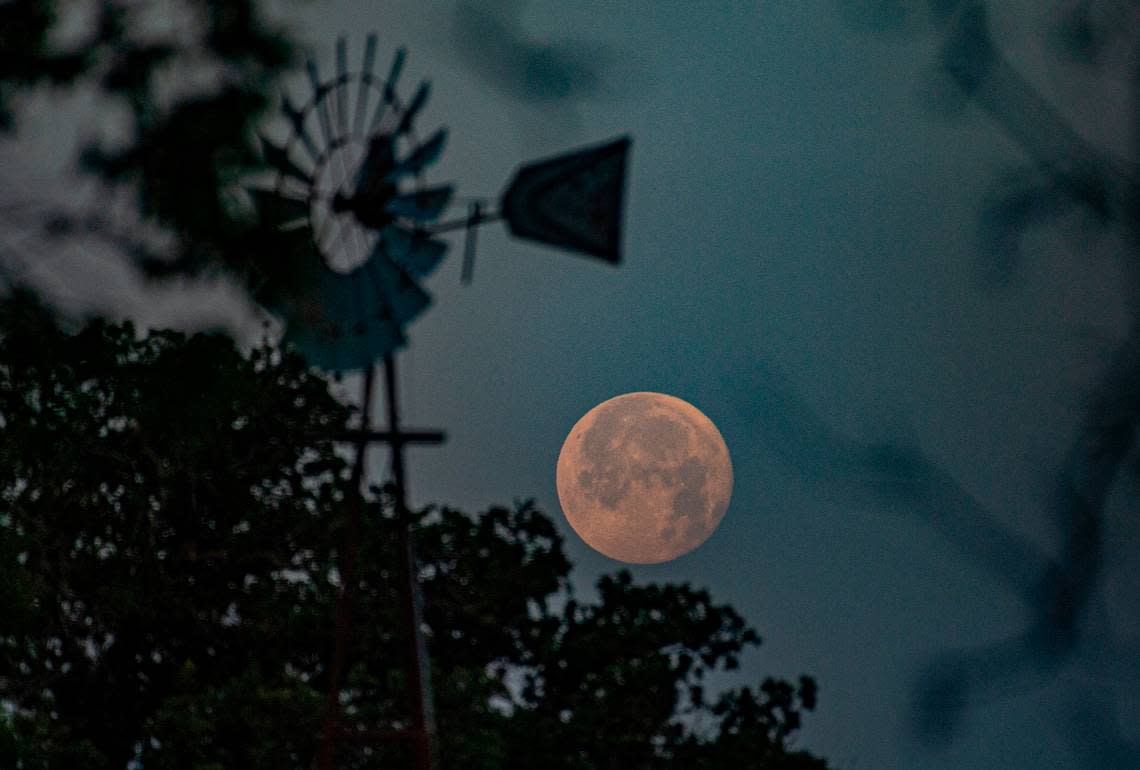‘Beaver moon’ will soon rise over Pennsylvania. Here’s the best night to catch a glimpse

One of the last full moons of 2023 will peak over Pennsylvania soon, and it will appear full for about three days.
November’s full moon is called the “beaver” moon, and it’s also known as the “frosty” or “long nights” moon, according to Forbes.
The celestial event is called the beaver moon because it’s the time of year when beavers shelter in their homes for the winter, according to the Old Farmer’s Almanac. The almanac uses moon names from Indigenous, colonial American and European folklore.
The moon will become full at 4:16 a.m. Monday, Nov. 27, NASA reports. It will appear close to full Sunday evening, as well. The moon will rise in State College at 4:06 p.m. Sunday and set at 7:38 a.m. Monday.
Showers are likely Sunday night, the National Weather Service State College office forecasts, and Monday night is expected to be mostly cloudy, with a low around 24 degrees Fahrenheit.
To get the best view of this month’s beaver moon and other sights in the night sky, NASA scientists recommend scoping out a dark, more rural stargazing spot if possible.
The next and final full moon of the year, the “cold” moon, will occur Dec. 26.
The Central Pennsylvania Observers held free stargazing events from April to October this year. Stargazing dates for 2024 have not been posted yet, but the organization’s next meeting is scheduled for 7 p.m. Thursday, Jan. 11.
Stargazing tips to see the full beaver moon
If you’re looking for a good place to stargaze with low light pollution, NASA offers these tips:
Head at least 20 to 30 miles from urban areas.
Try to find a space on the side of a large wilderness area or body of water.
Look for higher altitude locations.
Go to an area with open views, such as a lake shore or meadow, so trees don’t interfere with your line of sight.
Make sure to avoid trespassing.

